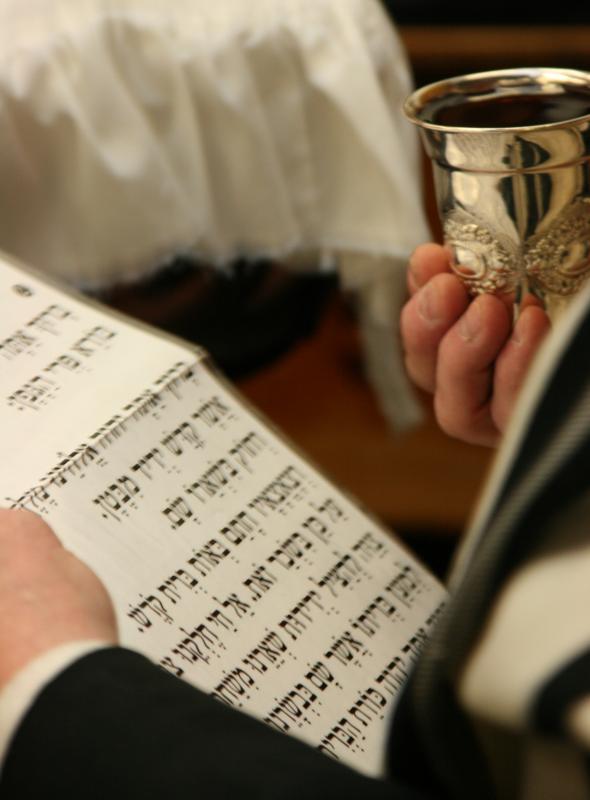At WiseGEEK, we're committed to delivering accurate, trustworthy information. Our expert-authored content is rigorously fact-checked and sourced from credible authorities. Discover how we uphold the highest standards in providing you with reliable knowledge.
What is the Difference Between the Mishnah and the Gemara?
The Mishnah and Gemara are the two components of the Talmud, a major text of Rabbinic Judaism, second only to the Hebrew Bible. The Mishnah was written around 200 CE and based on the earlier Oral Law, while the Gemara was completed around 500 CE and consists of commentary and elaboration on the Mishnah. Sometimes, the word Talmud is used to refer to the Gemara alone, and Shas is used to refer either to the Mishnah alone or to the Mishnah and Gemara together.
Jewish law and Biblical commentary were originally an oral tradition, but after the destruction of the Jewish Commonwealth and the Temple in Jerusalem in 70 CE, Jewish authorities felt the need to create a written version of Jewish laws in order to ensure their survival. The Mishnah and Gemara, complied over the following five centuries, were the result of this decision. The Mishnah, whose name means "Repetition" in Hebrew is organized by subject and divided into six orders.

The six orders of the Mishnah are Zeraim or "Seeds", Moed or "Festival," Nashim or "Women," Nezikin or "Damages," Kodashim or "Holy things," and Tohorot or "Purities." Each order is further divided into tractates or masechtot, which in turn are organized in chapters and verses. The rabbis who contributed to the Mishnah are known as the Tannaim.
The Gemara, which means "Completion" in Hebrew, is a collection of commentary on the Mishnah. It consists mainly of legal discussions and draws connections between the Mishnah, the Hebrew Bible, and the Baraita or Jewish oral tradition. The Gemara is organized to correspond to the Mishnah, and each section, called a sugya presents hypotheses and questions relating to a section of the Mishnah.

There are two versions of the Gemara. The first, known as the Jerusalem Talmud, was compiled around 350-400 CE. The Babylonian Talmud, completed around 500 CE, is considered the more authoritative version, and references to the Talmud or the Gemara without further qualification can be assumed to mean the Babylonian version. The rabbis who contributed to the Gemara are known as the Amoraim.
The Mishnah and Gemara have been a major part of Jewish religious tradition and scholarship since their composition. In the present day, many Jewish denominations consider study of the Mishnah and Gemara essential. Some denominations, notably Reform and Reconstructionist Judaism, place greater emphasis on the Hebrew Bible and do not encourage reading of the Talmud as strongly as Orthodox and Conservative Jews.
AS FEATURED ON:
AS FEATURED ON:












Discussion Comments
@Mammmood - I think that, according to the article, it would depend upon how whether you are describing Orthodox Jews or more mainstream Jews.
I don’t get the impression that either of the two groups put the commentaries on the same plane as the Talmud, but the Orthodox Jews encourage reading the commentaries while the non Orthodox Jews do not.
Jews and Christians share their same conviction in the divine inspiration of the Scriptures, so I don’t think any commentary could stand on that level if that’s what you’re asking.
@David09 - What I wonder is how much authority these written commentaries have in the Jewish tradition? For example, do the written commentaries hold the weight of the law?
I ask because I believe that in some religions, like Islam, there is a comparable weight given to a commentary of its holy text.
I don’t think Christianity has anything comparable. Commentaries are viewed simply as that, commentaries; the Scriptures alone are the final authority, in and of themselves.
The Jewish oral tradition is a thing to marvel at in my opinion. The fact that Orthodox Jews could have passed down their laws, histories and traditions simply by word of mouth, so to speak, is amazing.
I think it worked because a large part of their oral tradition involves mutterings, or meditations on the law. The Jews would repeat laws over and over to themselves until they became ingrained upon their consciousness and then would pass these traditions on to their children, and so on.
I think it also speaks to the fact that our society has become too divorced from the rich heritage of an oral tradition. I do, understand, however why the written accounts of the Jewish history and commentary final became necessary. The weakest ink is more permanent than the strongest memory I guess.
Post your comments